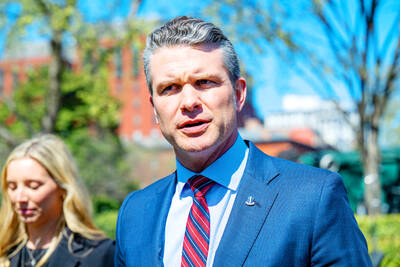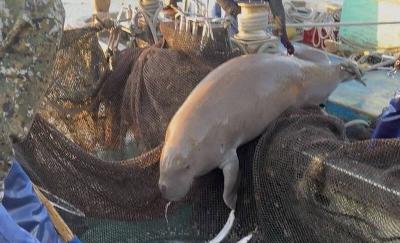George Washington University international affairs professor Robert Sutter called for a more pro-active US policy to deal with the stepped-up Chinese hegemony threat in Asia in a recent article.
Sutter outlined his recommendations in the article published on Monday in the newsletter of the Pacific Forum of the Center for Strategic and International Studies, titled “Dealing with America’s China Problem in Asia — Targeting China’s Vulnerabilities.”
He urged US President Barack Obama’s administration to devote more attention to Taiwan, because it is an area of acute sensitivity for China, while Taiwan has faced unbridled Chinese military coercion and intimidation for two decades, saying the US has several options “to raise significant costs for China.”
Sutter, an expert on China affairs and issues of cross-strait development, recommended “a more active US posture, calling for Washington to give open support of Taiwanese free expression and identity as represented in the Sunflower movement.”
“Beijing has shown no positive response to the rising importance of such demonstrations of Taiwan identity at odds with Chinese interests,” he added.
“US support for such expressions of Taiwanese identity could further shift Taiwan politics in favor of the opposition against the unpopular government of President Ma Ying-jeou (馬英九),” Sutter said.
By doing so, Sutter said China would face costly and difficult re-evaluation of its reasonably successful policy toward Taiwan thus far, should the opposition win the 2016 presidential election.
He said that China’s recent unrelenting drive to use coercive and intimidating state power, short of direct military action, to advance control of disputed territory in the East China Sea and the South China Sea has posed major problems for the US.
“China is pursuing its ‘salami slicing’ strategy, which undermines the credibility of US alliances and US standing as the region’s security guarantor,” Sutter said.
Sutter recommended that Washington complicate China’s defense plans and overall strategy toward Taiwan by allowing the sale of 66 F-16 fighters jets, which have long been sought by Taiwan’s government.
Following through on the procurement deal would show “the significance of the substantial US demonstration of support for Taiwan in the face of China’s pressure and threats,” Sutter wrote.
He said that “recent demonstrations in Hong Kong — another very sensitive area for China’s leadership — also foreshadow a possibly costly and delicate policy reevaluation for China.”
“The United States could easily add to the salience of the demonstrations and the related costs for China by adopting a higher profile in support for free expression in Hong Kong,” he said.
Another option Sutter suggested is a more active presence of US attack submarines in Asia.
“Surfacing of US attack submarines near disputed areas of the East and South China Seas, perhaps in conjunction with Japanese and Australian submarines, would remind China of its serious anti-submarine limitations,” he said.
“In response, Beijing will doubtless seek to fix the problem. Yet to remedy China’s anti-submarine warfare limitations will require prolonged and large-scale costs and diverted resources for Chinese military planners and Chinese leaders juggling budget priorities in the period of wide-ranging and difficult change in Chinese development and governance. In sum, the solution will also incur major costs for China,” he said.

‘DENIAL DEFENSE’: The US would increase its military presence with uncrewed ships, and submarines, while boosting defense in the Indo-Pacific, a Pete Hegseth memo said The US is reorienting its military strategy to focus primarily on deterring a potential Chinese invasion of Taiwan, a memo signed by US Secretary of Defense Pete Hegseth showed. The memo also called on Taiwan to increase its defense spending. The document, known as the “Interim National Defense Strategic Guidance,” was distributed this month and detailed the national defense plans of US President Donald Trump’s administration, an article in the Washington Post said on Saturday. It outlines how the US can prepare for a potential war with China and defend itself from threats in the “near abroad,” including Greenland and the Panama

A wild live dugong was found in Taiwan for the first time in 88 years, after it was accidentally caught by a fisher’s net on Tuesday in Yilan County’s Fenniaolin (粉鳥林). This is the first sighting of the species in Taiwan since 1937, having already been considered “extinct” in the country and considered as “vulnerable” by the International Union for Conservation of Nature. A fisher surnamed Chen (陳) went to Fenniaolin to collect the fish in his netting, but instead caught a 3m long, 500kg dugong. The fisher released the animal back into the wild, not realizing it was an endangered species at

The High Prosecutors’ Office yesterday withdrew an appeal against the acquittal of a former bank manager 22 years after his death, marking Taiwan’s first instance of prosecutors rendering posthumous justice to a wrongfully convicted defendant. Chu Ching-en (諸慶恩) — formerly a manager at the Taipei branch of BNP Paribas — was in 1999 accused by Weng Mao-chung (翁茂鍾), then-president of Chia Her Industrial Co, of forging a request for a fixed deposit of US$10 million by I-Hwa Industrial Co, a subsidiary of Chia Her, which was used as collateral. Chu was ruled not guilty in the first trial, but was found guilty

The Chinese Nationalist Party (KMT) is maintaining close ties with Beijing, the Democratic Progressive Party (DPP) said yesterday, hours after a new round of Chinese military drills in the Taiwan Strait began. Political parties in a democracy have a responsibility to be loyal to the nation and defend its sovereignty, DPP spokesman Justin Wu (吳崢) told a news conference in Taipei. His comments came hours after Beijing announced via Chinese state media that the Chinese People’s Liberation Army’s Eastern Theater Command was holding large-scale drills simulating a multi-pronged attack on Taiwan. Contrary to the KMT’s claims that it is staunchly anti-communist, KMT Deputy